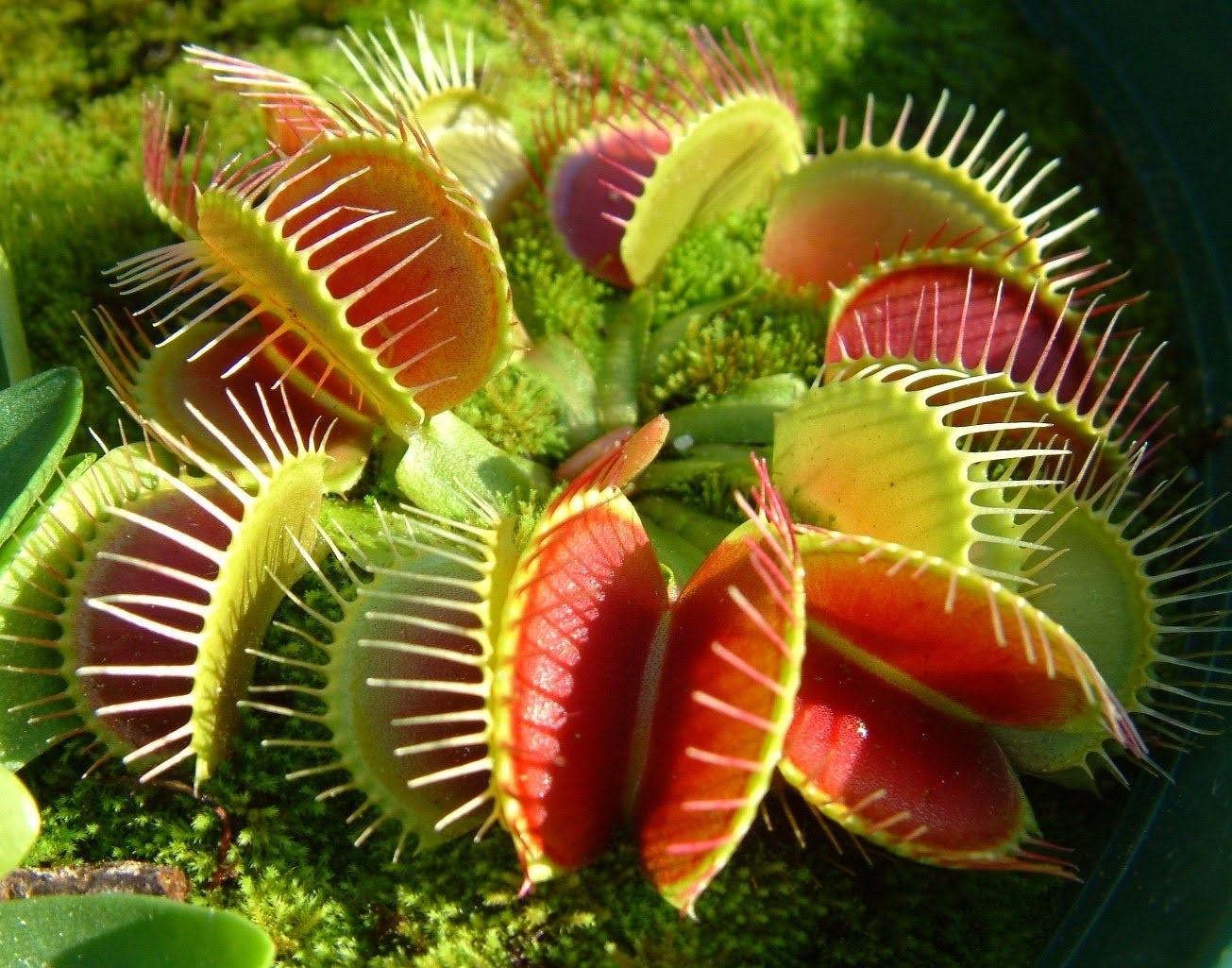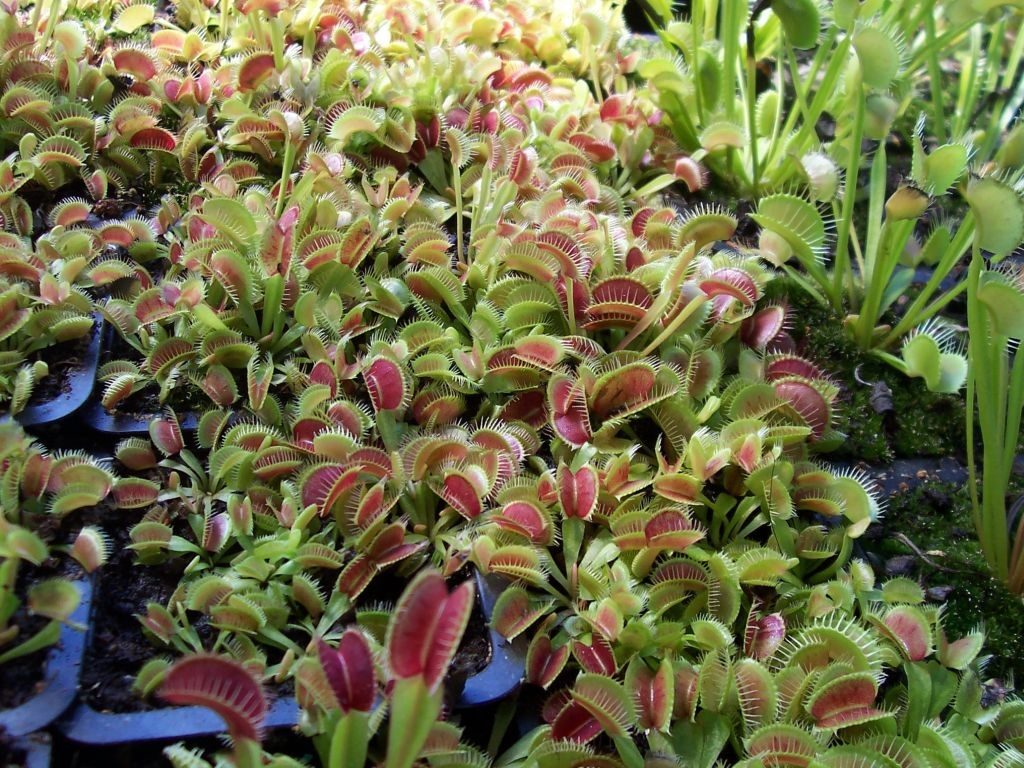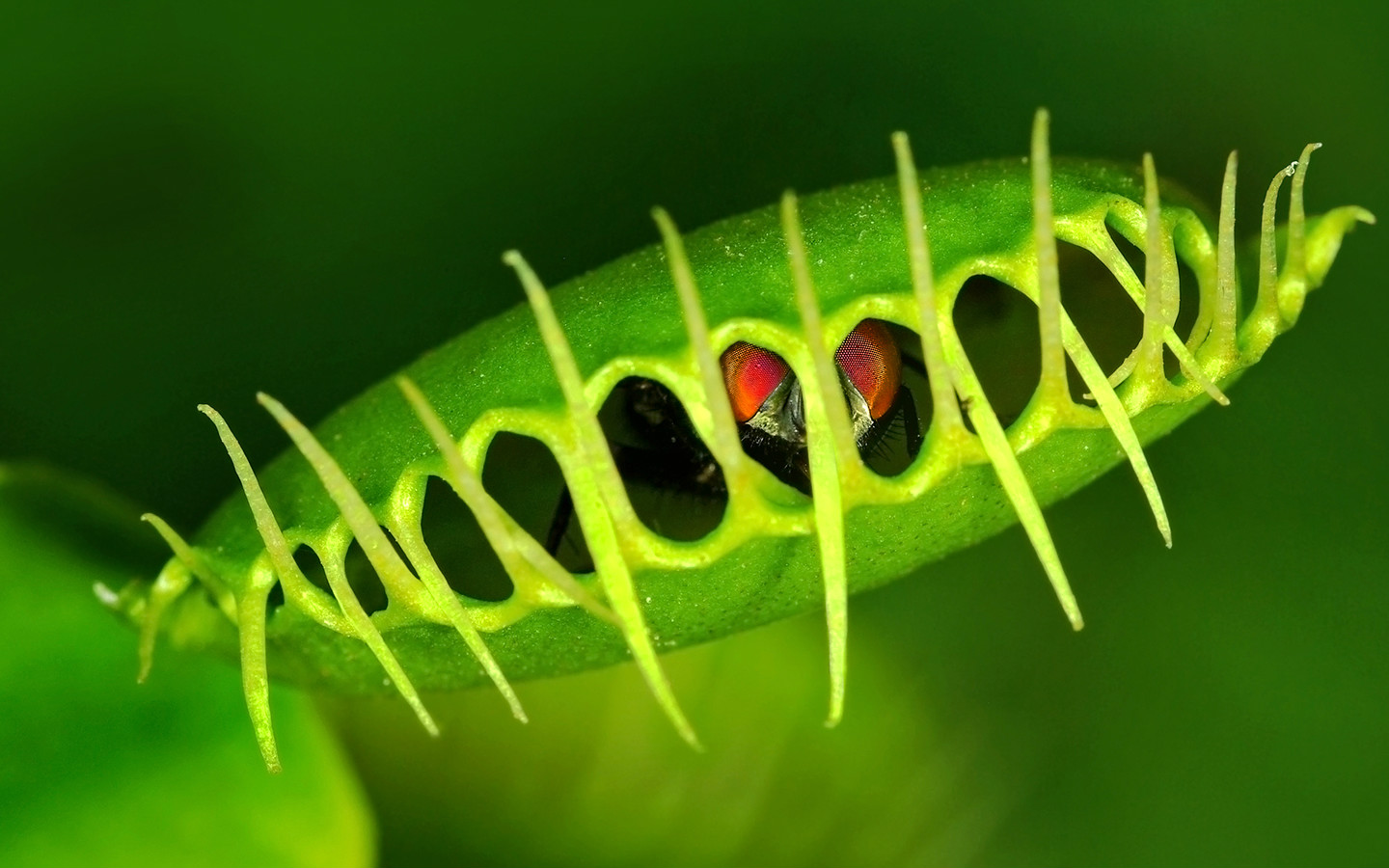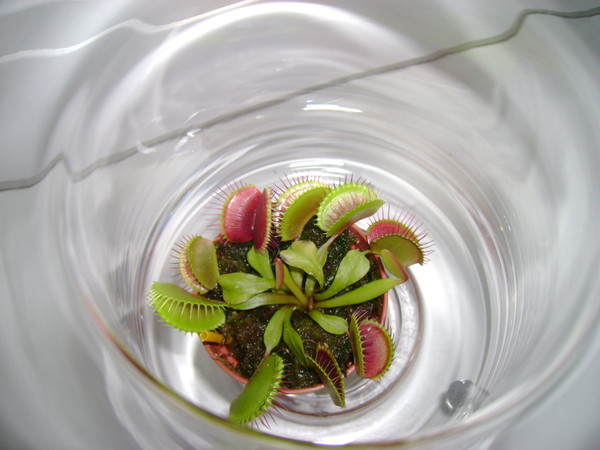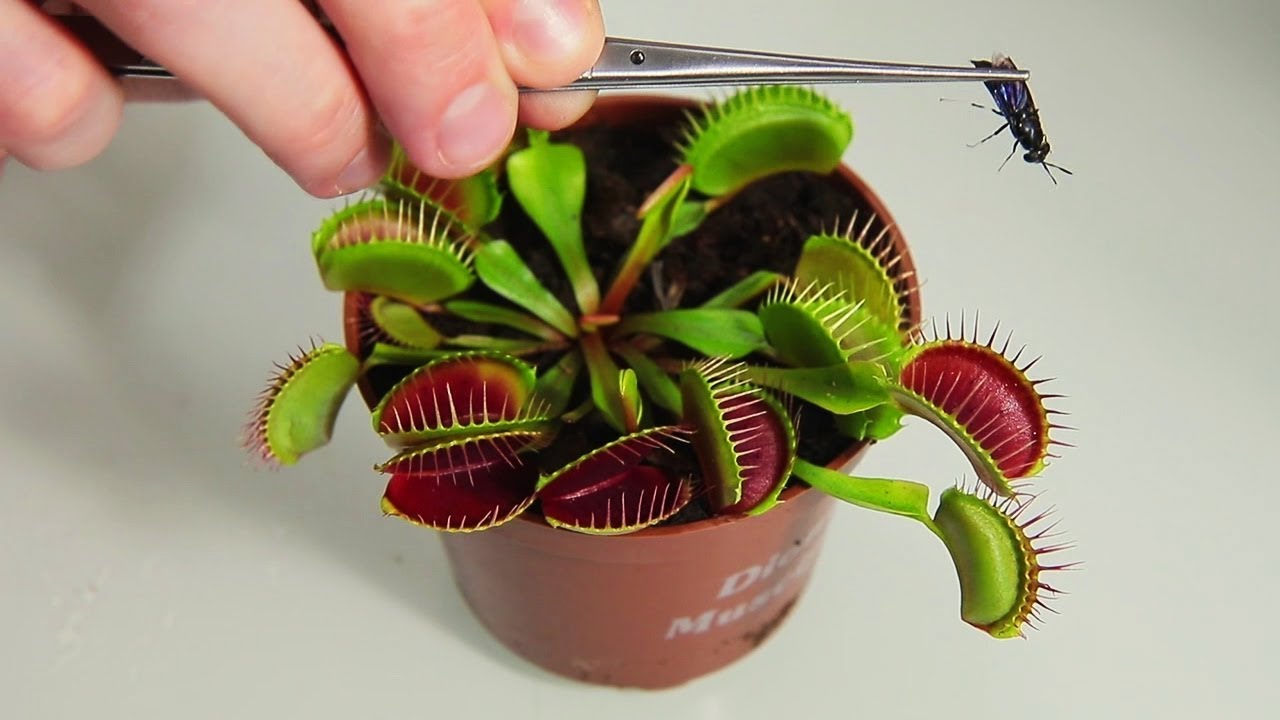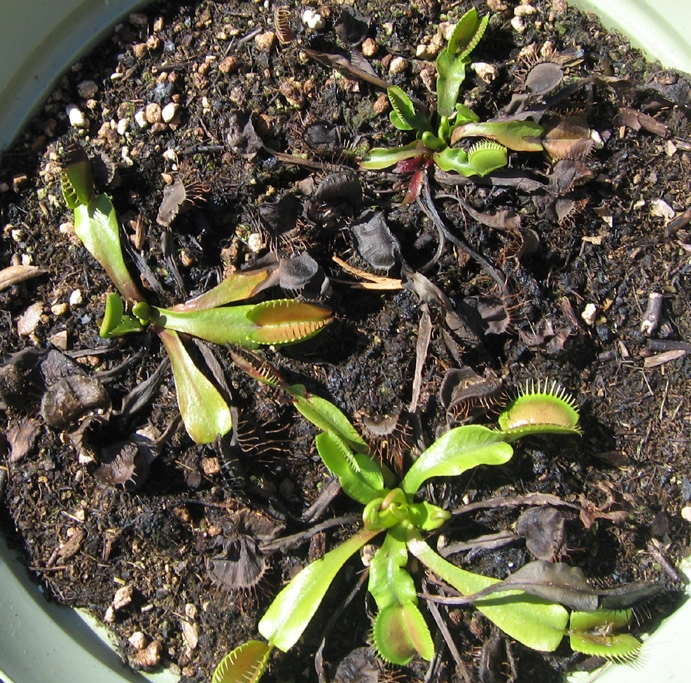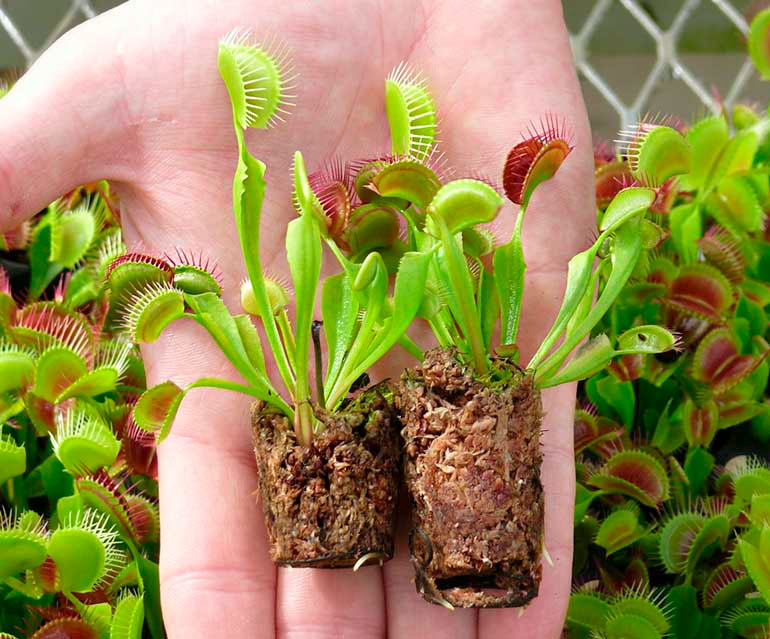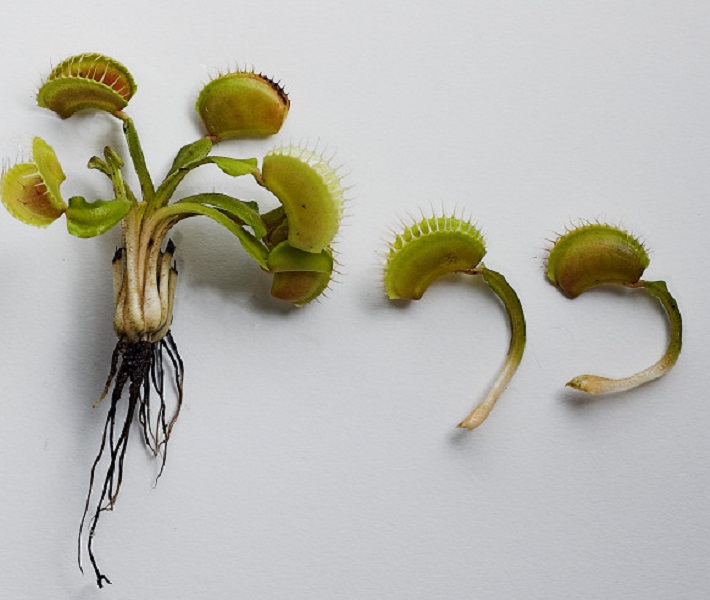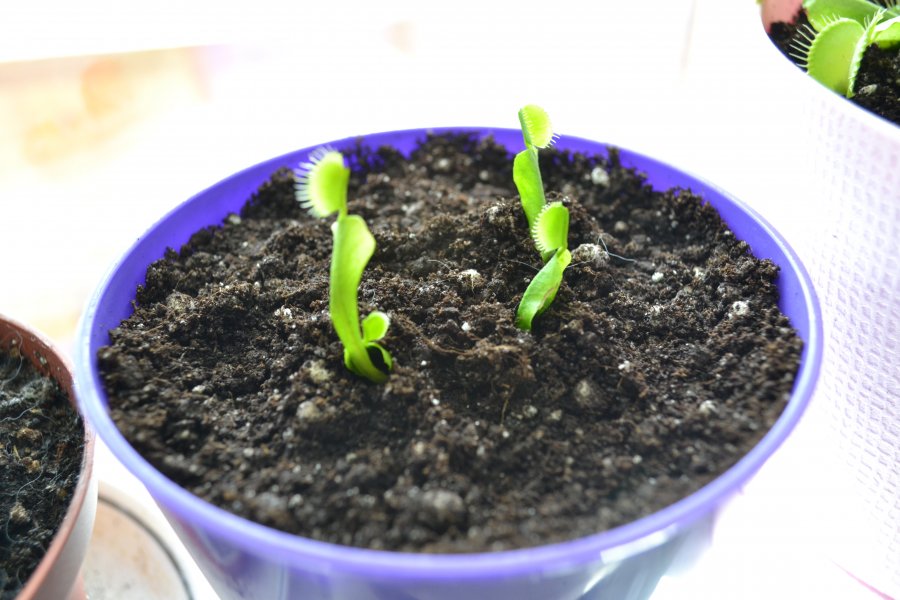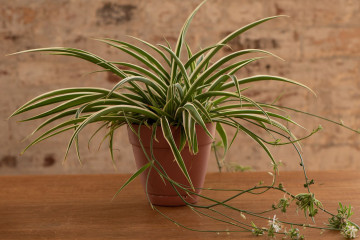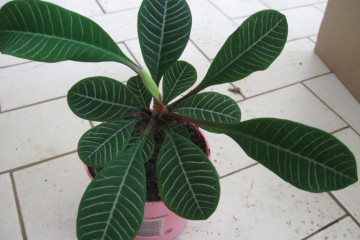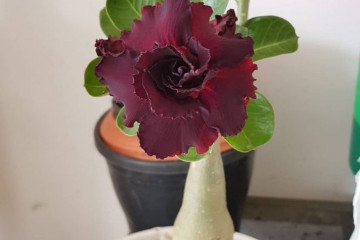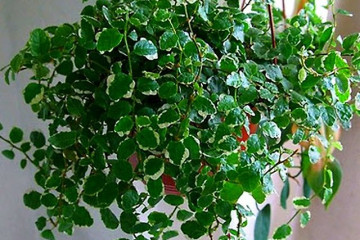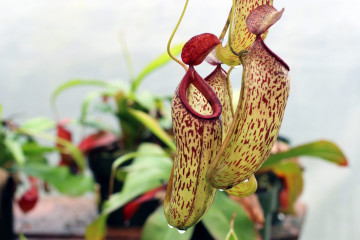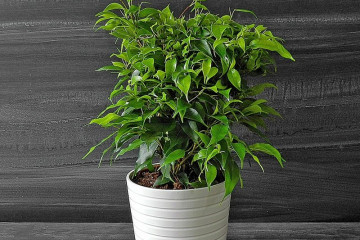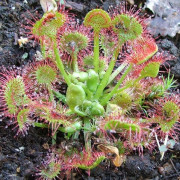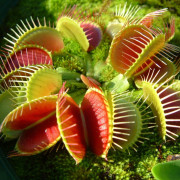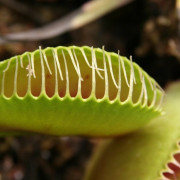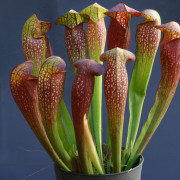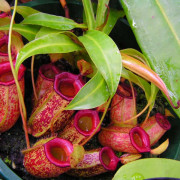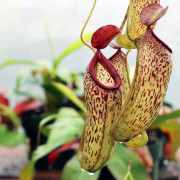Venus flytrap - description and care of the house
Content:
Venus flytrap (dionea) can be considered the most exotic plant that growers grow at home. This carnivorous plant is original and somewhat terrifying on the windowsill, given its small size. The flycatcher will appeal to those who like to observe plants, since the Dionea has a specific process of obtaining food and absorbing it.
What does a flower look like, which family it belongs to
Venus flytrap (Dionea muscipula) belongs to perennial herbaceous insectivorous plants. This is the only representative of its kind from the Rosyankov family (Droseraceae). The Latin name "muscipula" translated into Russian means "mousetrap", probably the botanist who gave the specific name to the flower wanted to write "muscicipula" (fly trap) and was mistaken.
History of appearance
This plant predator was originally named after Venus, the goddess of plants and love in ancient Rome, and in Greek mythology, Dione was the mother of Aphrodite.
The natural habitat of the flycatcher is the peat bogs of North and South Carolina, USA. In nature, the number of plants of this species is rapidly decreasing due to human activities, but the Venus flytrap is widespread and in demand among flower growers all over the world.
Dionea's leaves are collected in rosettes growing from a short bulbous stem underground. Each plant has 4-7 elongated leaves, at the end of which traps are formed. Such specific leaves consist of two valves and are able to close together due to long thin bristles located along the edges. By folding, the flaps keep the caught prey inside and do not allow it to escape.
The characteristic color of the flower is green. Traps are similar in color, but can appear reddish on the inside under good lighting conditions.
Common varieties
In addition to the characteristic form of the plant, breeders have bred many different varieties, differing in color and size. For instance:
- Dante Trap. The bush is colored green, with a red stripe running along the front side of the valves. Leaves and traps are almost vertical.
- Giant. The peculiarity of this variety is that the size of the traps is more than 5 cm, in bright light they turn purple.
- Akai Riu. In this variety, not only traps, but also leaves are painted in a red tone.
- Ragula. The green leaves of the bush are diluted with traps of red and purple hues.
- Bohemian Garnet. A dark green bush with wide leaves that cover the entire substrate, the traps are also vertical.
- Funnel Trap. The young bush is colored green, and as the plant grows, the shutters acquire a red tint.
- Crocedile. Flycatcher leaves are arranged horizontally. Young traps have a pale pink hue, after a while they turn red.
- Triton. The variety is distinguished by the unusual shape of the traps. They are elongated, and their teeth often stick together.
- Dracula. The green bush has traps with a red cavity, the teeth are short.
Healing properties
Dionea is not medicinal. Contraindications to its use have not been studied in medicine.
Features of caring for a plant at home
Even novice growers will be able to grow the Venus flytrap plant: caring for a flower at home is not at all difficult. Bushes grow well on poor, acidic soils with good water permeability. Except in indoor conditions, a flower can live in a summer cottage.
Ambient temperature and humidity
In summer, Dionea needs a temperature regime of 20 to 30 ° C. During the winter season, it is recommended to keep the plant at a temperature not exceeding 10 ° C. This period should last 3-4 months. If the temperature background is not observed, the plant may die, therefore it is most often planted in florariums or glass greenhouses. Thanks to such conditions, it is possible to maintain the required air humidity, which should be quite high.
Lighting
For the normal development of a flower, it needs to create conditions that are as close to natural as possible. A specific carnivorous plant loves to sunbathe for 4-5 hours a day. If natural light is not enough, it can be supplemented with artificial lighting. Experts recommend placing the bush on the west or east side of the house.
Watering
Due to the morphological features of the root system, the plant cannot process mineral salts from the soil, therefore, it is necessary to water the flower with rain or distilled water.
The soil in the pot should always remain moist; if the soil dries out, the traps may die. It is better to keep the container with dionea in a pan with water so that the holes in the bottom of the pot are immersed in it. So the plant will be able to receive water when it is needed. A couple of times a week, you can spray the bush with a spray bottle.
Priming
The best soil for Venus flytrap is sphagnum moss, perlite and coconut substrate. A 2 to 1 mixture of high moor peat and quartz sand is also suitable. If the acquired plant is in a different substrate, it is better to transplant it immediately.
It is necessary to keep the plant in a pot with a depth of at least 10-12 cm, it should not be too wide, but not narrow either. There is no need to transplant a flower annually, this can be done every 2-3 years, but very carefully so as not to provoke traps.
Top dressing
The insectivorous Dionea does not need fertilizers, since it gets everything it needs from the insects it eats. Therefore, it is not necessary to apply top dressing to the soil. The content of any fertilizer in the substrate for the plant poisons the crop.
What you can not feed Venus flytrap:
- beetles with a hard chitinous shell;
- earthworms;
- gnawing insects;
- sausage or meat.
For the entire growing season, 2-3 medium-sized spiders, flies or mosquitoes are enough for the plant. At the end of September, feeding stops until spring.
It is interesting to watch the feeding process, but do not forget some rules in order not to harm the plant:
- Dionea takes food only when she is hungry (feels a lack of nitrogen). At other times, mosquitoes and flies are not of interest to her.
- You can't tease the plant for fun. The process of catching and digesting food is very energy-intensive, in addition, each trap dies off after a certain number of slams.
- You cannot feed Dionea from a common table. The flower reacts only to live food, the trap closes and begins to release digestive juices only if the victim moves and touches special hairs (triggers). Therefore, the plant will not react to inanimate food.
- The size of the food is important. Too large "pieces" of food Dionea will not be able to digest. The leftovers will begin to decompose and rot.
In any stressful situation, the plant refuses food. The flycatcher experiences stress during transplantation, during illness, with a lack of light, or just a sharp change in scenery.
Bushes that grow in open ground are able to feed themselves, and those specimens that are kept on the window cannot feed on their own and require care.
Features of winter care
Preparation for winter in Dionea begins in the fall. The leaves dry out, turn black and fall off, and the plant itself shrivels. Inexperienced growers can take this condition of the plant for a disease and try to revive it. But for the flycatcher, this is a normal state during rest.
For the wintering period, the pot with the predator plant must be placed in a cool place:
- a window sill on which the temperature is below room temperature;
- lower shelf of the refrigerator;
- cellar.
"Sleep off" and gain strength during the winter is simply a must for the Dionea. In this state, the plant is left until mid-February. During this period, there is practically no need to care for the plant, it is enough to occasionally check the condition of the substrate - it should be slightly moistened.
The flower begins to wake up slowly at the end of February. And at the end of spring, with the onset of summer, the flycatcher begins to grow actively.
When and how it blooms
The carnivorous flycatcher begins to bloom in May or June. Long peduncles with corymbose inflorescences of small flowers, similar to stars, appear on the bush. Flowers about 1 cm in size, white, have a sweetish smell. Flowering continues for several weeks.
There are no changes in the care of a flowering bush.
Reproduction
Flycatcher breeding can be done in several ways:
- children;
- cuttings;
- peduncle;
- seeds.
Children
The easiest way that Dionea can reproduce is to separate the babies from the mother bush. During transplantation, the baby is carefully separated from the mother, trying not to injure the delicate roots of the plant. The separation is best done with a sharp knife, and then the sections should be treated with crushed activated carbon or fungicides.
Cuttings
Leaves are cut from an adult plant. After treatment with "Kornevin", the cutting can be immediately planted in a substrate of peat and sand. It is important to plant the leaf at a slight angle and cover it with a greenhouse. It is left in a well-lit place for about 3 months, periodically airing and watering.
Peduncle
Reproduction of Dionea by a peduncle should be carried out in the spring, when it grows by 4-5 cm. It must be cut off and deepened into the substrate with peat by about 1 cm and covered with a cap. Young shoots will appear in one and a half - two months of waiting.At this time, it is necessary to ventilate the rooted peduncle and keep the soil moist. Over time, it can dry out and acquire a lifeless look, but this does not mean that reproduction in this way was not possible, you have to wait a few more months before the appearance of new exotic plants.
Seeds
Seed propagation is a very complex and specific process that only experienced growers can handle. An approximate scheme for planting a flycatcher from seeds includes:
- Obtaining seeds by artificial pollination using a cotton swab. After a successful procedure, seed boxes appear after 30 days.
- After receiving the seeds, they should be sown within 3 months, otherwise they will lose their germination. The first seedlings appear within 15-20 days after sowing.
- After another 20 days, the seedlings can be dived into separate pots.
During the entire time of growing Dionea from seeds, the crops should be in the greenhouse under diffused, bright light, and the soil mixture should always be moist.
When growing a flower from seed, it is important to remember that it will become an adult in about 5 years.
Transfer
There is no need to replant the plant annually, as this causes a stressful condition in the flycatcher. A transplant must be done to renew the substrate, which deoxidizes over time, or if you need to plant the children. This is best done after the rest period has passed.
Growing problems and disease
The carnivorous plant is sometimes attacked by insect pests. The most common Dionea parasites are aphids, spider mites and mealybugs. If the bush is affected by these insects, disinfectant treatment with insecticides using an aerosol should be carried out.
If not properly cared for, the plant can also develop some fungal or bacterial diseases, such as gray mold or black soot fungus. Most often, they appear with strong substrate moisture and lack of sunlight. The leaves of a diseased plant turn black.
If a bush is damaged by fungi, it is treated with fungicides, the substrate must be replaced, and the infected parts of the bush are removed.
Sometimes, when the flycatcher cannot completely digest the insect, bacterial decay of the trap begins. This can lead to the death of the entire bush, if the remnants of food or already affected areas of the bush are not removed in time.
Problems, manifested in the form of dropping buds or leaves, are associated with the fact that the plant does not have enough strength for full growth and development. Perhaps the predator spends a lot of energy on frequent, improper feedings.
With insufficient lighting and low temperatures, the leaves of the flycatcher begin to fade.
If you pay insufficient attention to the moisture content of the soil, the leaves of the insectivorous bush begin to wither, the edges dry out.
The exotic plant Dionea grows well not only in the wild, but also at home. It is enough to adhere to a few rules for caring for a flower and it will be possible to observe the original behavior of a flycatcher for many years.
